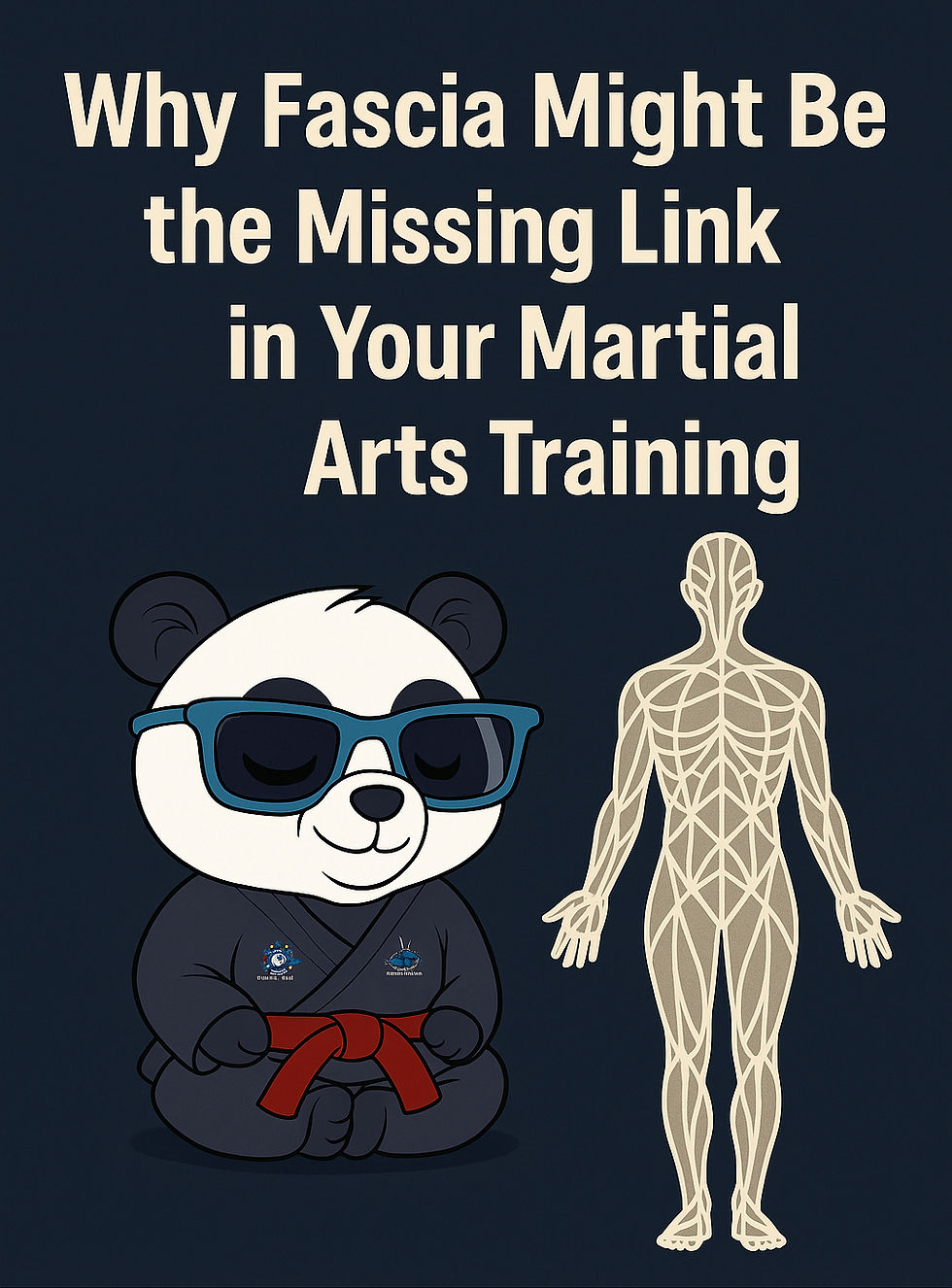Why Fascia Might Be the Missing Link in Your Martial Arts Training
- Jul 12
- 3 min read

For years, I taught Kyusho and Tuite using traditional martial arts wisdom—kata, pressure points, energy flows, joint angles. It all worked… but something always felt like it was missing.
Sometimes techniques landed too well or not at all. Sometimes control required effort, other times it felt effortless. I chalked it up to “refinement” or “intent,” but the truth is, I didn’t fully understand the hidden layer behind it all.
Then I discovered fascia.
And everything changed.
What Is Fascia, Really?
Fascia is the body’s soft tissue scaffolding—a web of connective tissue that wraps around your muscles, nerves, organs, and bones. But it’s not just a passive wrap. Fascia moves, contracts, stiffens, glides, and responds to stress. It carries sensory information. It holds trauma. It remembers tension patterns.
In other words… it’s alive.
Books like Anatomy Trains and Becoming a Supple Leopard cracked this open for me. Suddenly, I saw how fascia wasn’t just involved—it was central to movement quality, injury risk, and performance.
Why Martial Artists Should Care
Whether you’re striking, locking, grappling, or flowing through kata, fascia is in play. It determines:
How force transmits through your body
Whether a joint is supported or vulnerable
If your technique feels smooth… or sticky
How quickly you recover from training
Training without an understanding of fascia is like trying to fix a car without noticing the wiring system. You might still get it to run—but you’re missing the deeper connection.
Fascia & Pressure Points
Here’s where it gets interesting.
Fascia overlays both nerve pathways and acupuncture meridians—the exact targets we strike in Kyusho. When fascia is tight or dehydrated, it amplifies the effect of nerve strikes. It creates drag and recoil, which explains why some pressure point techniques “echo” through the body.
This isn’t magic—it’s physics, anatomy, and tissue dynamics.
Striking through fascial chains creates far more disruption than targeting a point in isolation.
Fascia & Tuite (Joint Locks)
Tuite techniques rely on tension, torque, and disruption of alignment. Fascia plays a massive role in that. You’re not just pulling on joints—you’re manipulating the entire tensile web that holds the body together.
If you’ve ever wondered why one lock feels like you’re “fighting” the person and another feels like they fall into it, fascia is likely the key.
Understanding fascial slack lines and tension chains lets you apply less effort while gaining more control. It’s the definition of effortless effectiveness.
How to Start Training With Fascia in Mind
You don’t need a new kata or secret technique to begin. Start here:
✅ Slow down your movement. Learn to feel internal tension.
✅ Track recoil. Notice what springs back after a strike or pull.
✅ Incorporate release work. Foam rollers, massage balls, and joint mobility work help.
✅ Breathe deeper. Fascia responds to breath—especially diaphragmatic patterns.
✅ Stay curious. Watch how tension travels in your partner’s body.
This month, I’ll be sharing short videos, visuals, and tech tips on fascia through my social media and Learning Lab. If you’re curious how fascia fits into your art, keep an eye out.
Final Thoughts
The more I study fascia, the more I realize how much I don’t know. But each discovery brings me closer to something I’ve always believed: that good martial arts are built on truth, not tradition alone. When anatomy, science, and practice line up—it just works.
Thanks for reading—and as always,
Train smart. Stay curious. Keep growing.
Understand the Science. Master the Art! 🐼

Comments